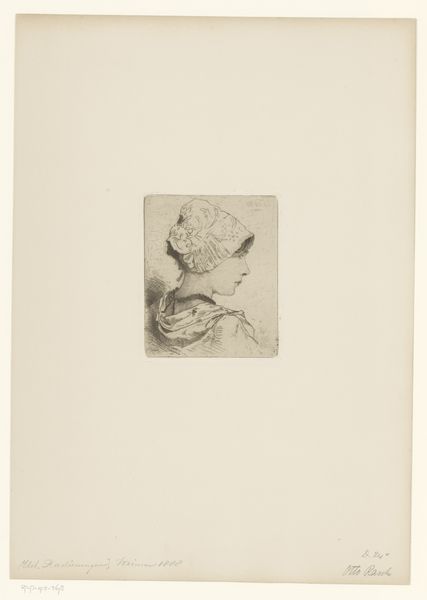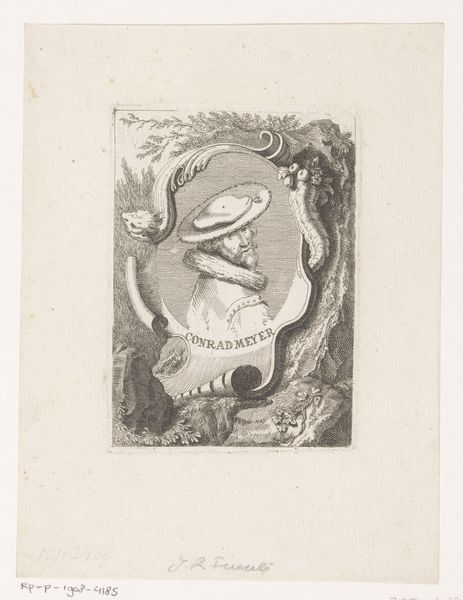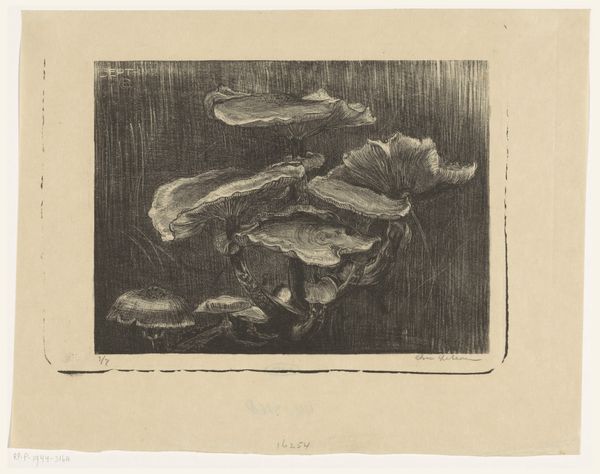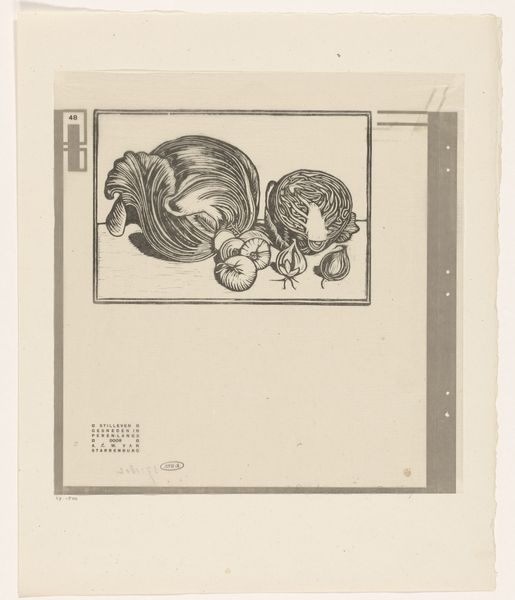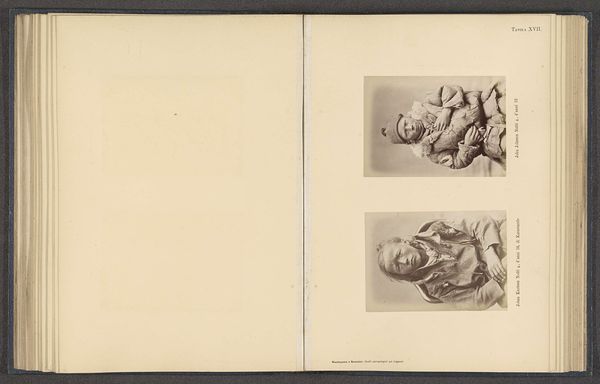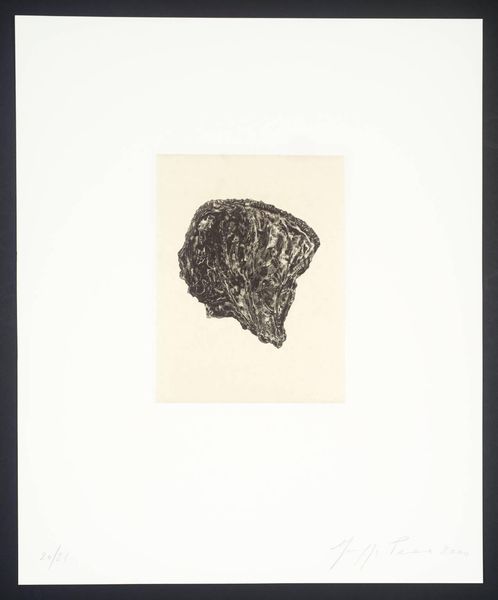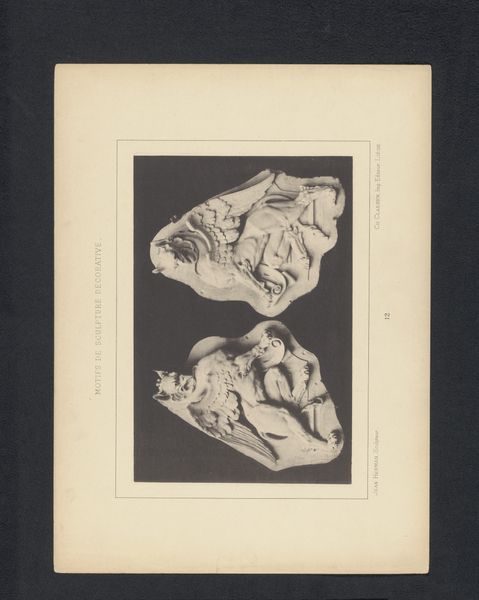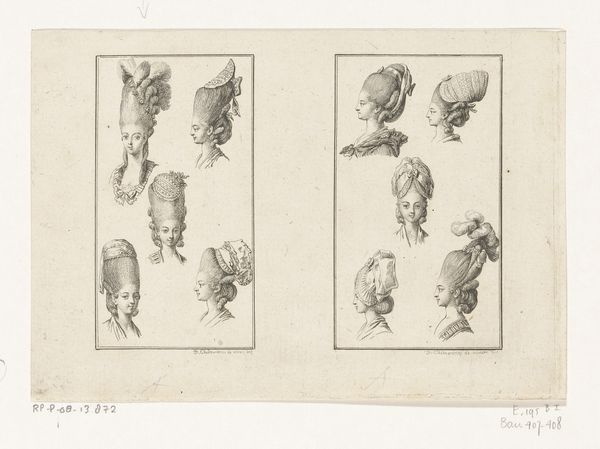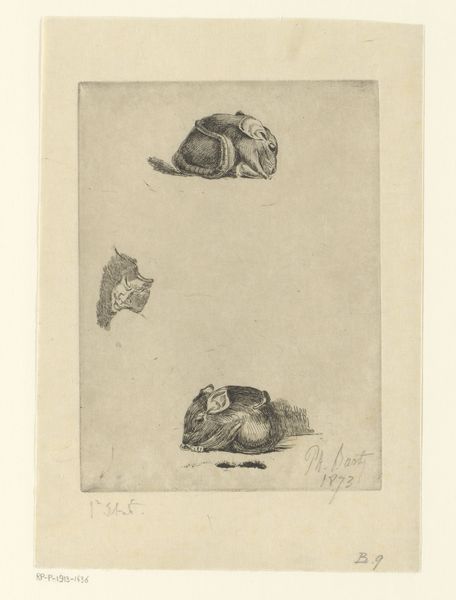
drawing, print, etching, paper, ink
#
drawing
#
animal
# print
#
etching
#
paper
#
ink
#
academic-art
#
realism
Dimensions: height 160 mm, width 118 mm
Copyright: Rijks Museum: Open Domain
Curator: Here we have Hendrik Jozef Franciscus van der Poorten’s etching, “Drie ramskoppen,” or "Three Rams’ Heads," created around 1840. It's a striking example of realism printed on paper. What are your first impressions? Editor: My first impression is one of somewhat muted strength. The dark ink contrasts so heavily against the stark white paper; it’s a moody piece, wouldn’t you agree? They look quite imposing despite being severed heads. Curator: Well, from a material perspective, think about the labor involved in etching at that time. Each line, each dot creating that intense shading, meticulously carved into a metal plate and then pressed onto paper. What purpose do you believe this labor ultimately serves? Editor: I think about the era and this emphasis on realism, and it suggests a certain social ambition, almost a scientific gaze being applied to the animal world. It asks questions about domestication and power dynamics inherent in agricultural societies, doesn't it? Are we celebrating the virility of the ram, or is there something more sinister about displaying them like this? Curator: I would add that in this academic style, we observe both close detail and scientific analysis of the muscular structure as well as the detailed fur of the animal. Furthermore, paper and ink production had become far more mechanized by 1840 and was integrated with distribution networks and trade, which also had the byproduct of integrating labor across larger zones and the division of work. Editor: Yes, and it reflects back on that period’s specific understanding of the relationship between humans and the natural world. The artist shows us not a romanticized view of pastoral life but a cold, objective rendering. Did the proliferation of prints impact access to education, or did they normalize new methods of exerting control over agriculture and the rural labor force? Curator: Exactly. It’s an artwork of material paradoxes that highlights production. There’s inherent control demonstrated by rendering and printing such lifelike images of heads so close together. The material conditions surrounding its creation ultimately raise so many different questions. Editor: This artwork becomes more complex through discussion. The interplay of medium, the animal's social role, and potential power struggles. Curator: Indeed. Looking at the production of art allows for a broader reflection about labor and social narratives and expectations about consumption and culture, which shape our lives even today.
Comments
No comments
Be the first to comment and join the conversation on the ultimate creative platform.
